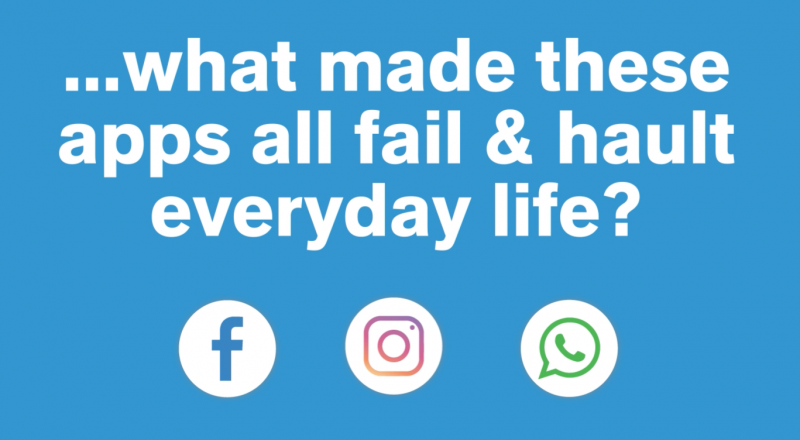To ChatGPT or to not ChatGPT, That is the Question
...
Read more...
Read more...
Read moreMany of us will have vowed to cut down on our social media usage at some point since it became a mainstay of our lives. But to have it taken away altogether yesterday for over six hours proved that it had become a vital underpinning of our modern society.

WhatsApp, Instagram, and Facebook (all owned by the latter) are used by over 3.5 billion people for both personal communication and core business activities – what made these apps all fail and halt everyday life for so many of us?
In an official statement, Facebook cited a faulty configuration change for the outage, but what does this technical jargon actually mean?
There are two key aspects to internet routing when dealing with a company as large as Facebook – BGP (Border Gateway Protocol) and DNS (Domain Name System). We can think of BGP like a road map detailing the best way to get to a particular site, with DNS acting as an address system detailing to location (IP address) of each website. While smaller websites do not take charge of their own road map and address system, Facebook have a whole world of connectivity that they maintain themselves. This, as we can see, complicated matters.
All software systems need regular updates to continue running effectively, but when Facebook deployed their latest update yesterday, they effectively told the BGP ‘road map’ to remove all paths to Facebook. This then meant that there was no way to find each website address.
This affected everything that Facebook runs, so WhatsApp, Instagram and even Facebook’s internal servers; employees were locked out of access-controlled offices and had no access to email!
So that of course made it a challenging problem to fix. The people who could diagnose and sort it were both physically and remotely shut out.
While it hasn’t been confirmed, Facebook eventually had to physically travel to and manually reset the servers in California.
Most of us woke up this morning with relief to see our favourite apps fully functional again, but we’re sure that at Facebook everyone is focused on making sure this doesn’t happen again.